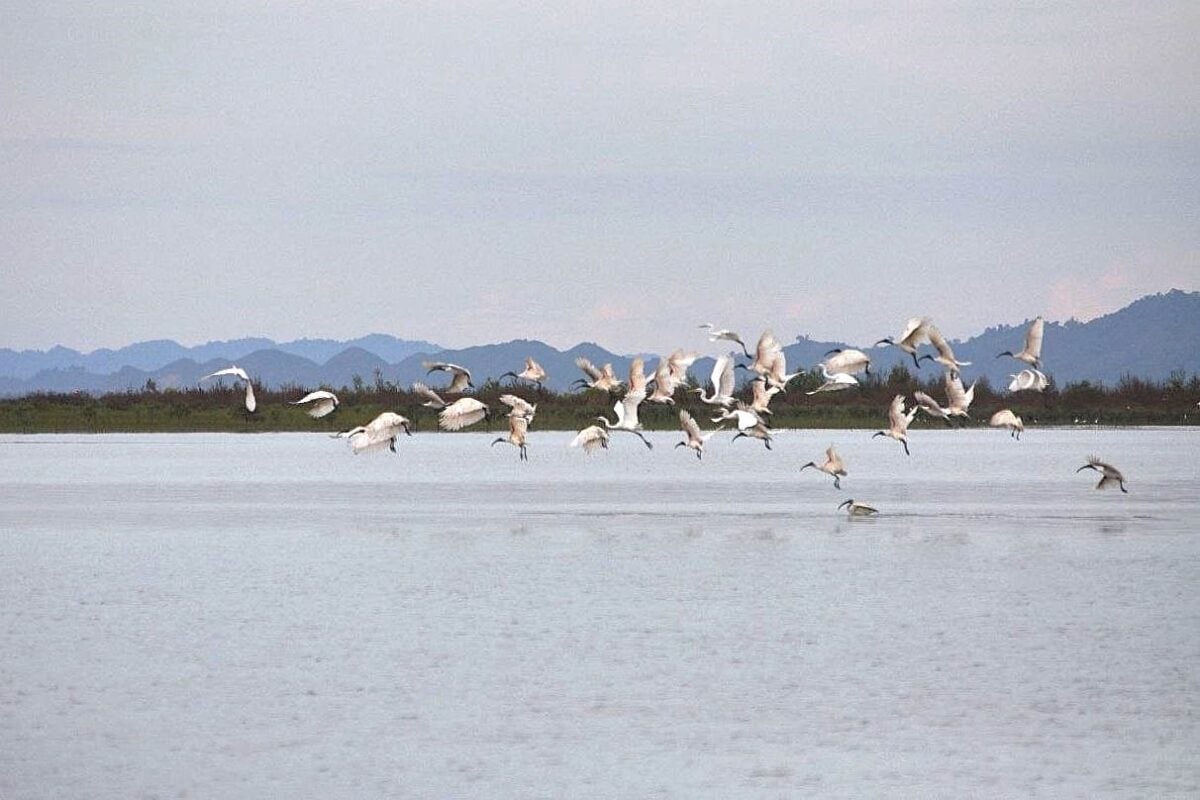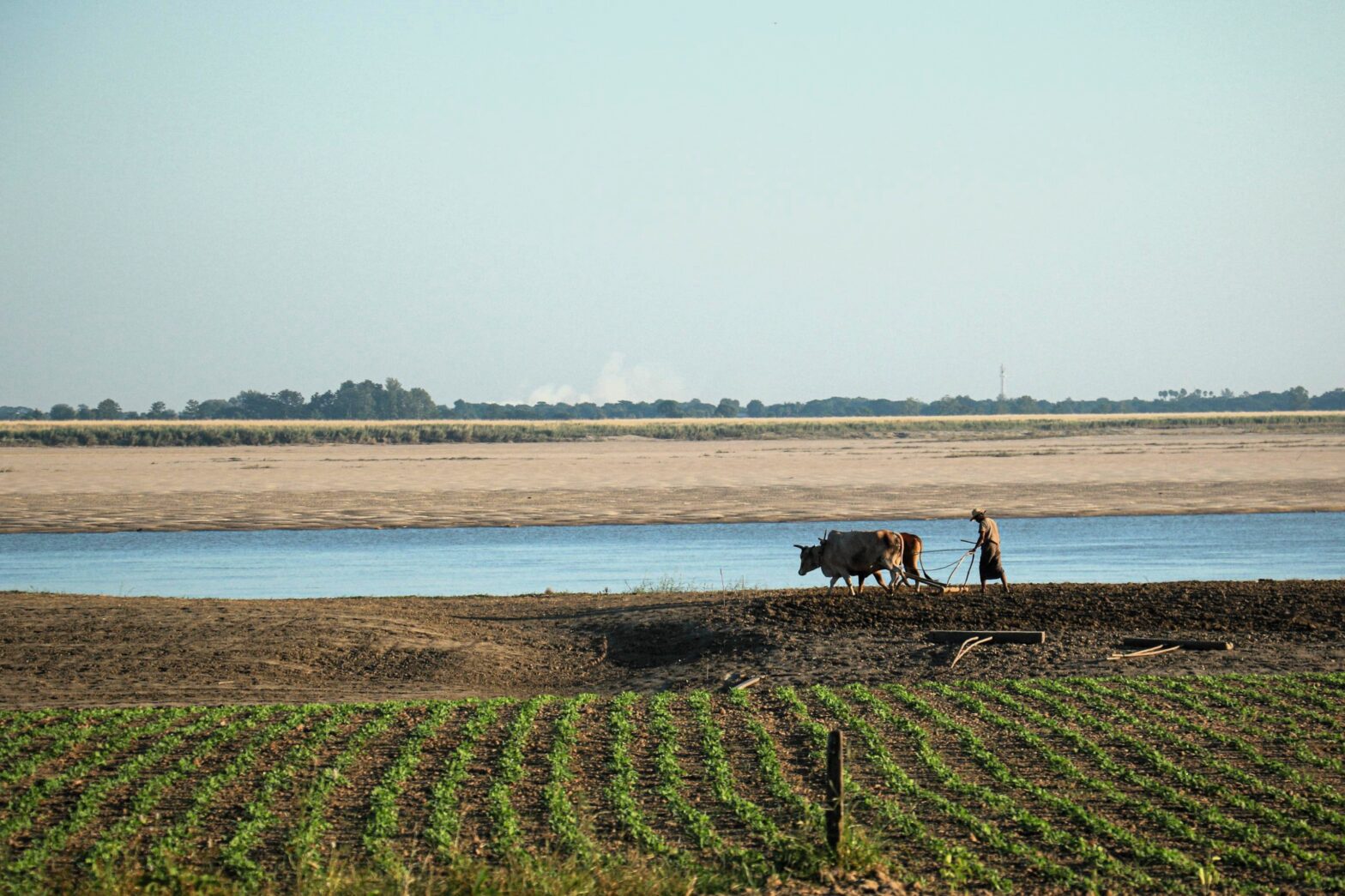SITTWE, RAKHINE – As ethnic armed groups and military forces clash and fight for control of areas in Myanmar’s Rakhine State, conservation efforts at Ramsar site wetlands have come to a halt, leading to increased illegal poaching and habitat destruction.
Since the launch of Operation 1027 by ethnic armed groups against the military junta’s forces, the loud explosions of heavy artillery shells have become part of daily life in the towns and villages surrounding the designated Ramsar site of Nanthar Island and the Mayyu Estuary.
The fighting has not only disrupted people’s lives, forcing many to flee. It has also halted conservation efforts in this 3,608-hectare wetland on the coast of Myanmar’s western Rakhine State.
During the ongoing war, Yan Naung Soe, an environmentalist from Rakhine State’s capital city Sittwe has been in a difficult position – he can no longer access the protected areas. Sea travel has been banned since the conflict intensified.
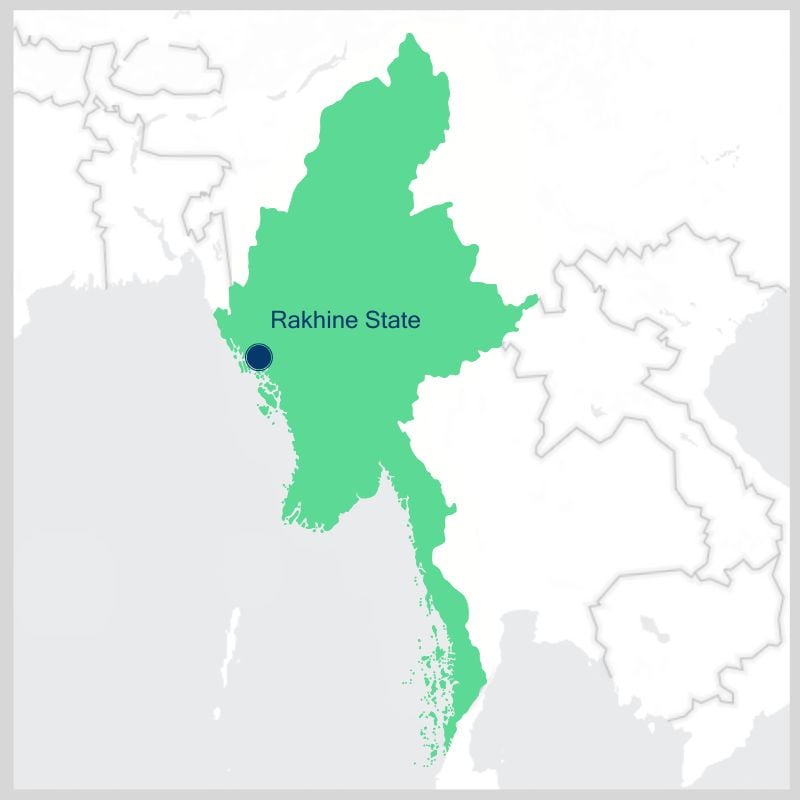
“Our role [in raising awareness about the value of the wetland] is limited due to the war, and people are finding ways to continue hunting birds and digging up turtle eggs in the Ramsar site,” he lamented.
Ramsar sites refer to sites listed on the List of Wetlands of International Importance, also known as the Ramsar List. These sites are designated because they meet the criteria for identifying what they call Wetlands of International Importance.
His team discovered more fishing nets had been set up near the uninhabited Nanthar Island, which have killed sea turtles due to the lack of law enforcement. Illegal activities such as turtle egg poaching and sand mining have also increased.
Operation 1027 was launched in October 2023 by the ethnic armed group coalition known as the Three Brotherhood Alliance, which comprises the Arakan Army (AA) based in western Rakhine State, the Myanmar National Democratic Alliance Army and the Ta’ang National Liberation Army from northern Shan State.
Formed in 2017, the alliance gained prominence after launching Operation 1027 last year, attacking Myanmar’s military forces in response to the military’s bloody coup in 2021.
The AA’s offensive in Rakhine State has been significant, according to recent news report by The Irrawaddy. The armed group has taken control of five of the 17 townships – Pauktaw, Kyauktaw, Minbya, Mrauk-U and Myebon – which surround the Mayyu Estuary.
The Irrawaddy also reported that nine townships around the port of Kyaukphyu, known for its abundant marine resources, have been experiencing intense fighting and air strikes due to the ongoing conflict between the AA and Myanmar’s military forces.
As a result, officials from Rakhine State’s Forest Department and Myanmar’s Department of Fisheries, which manage the Ramsar site, have had to halt their wetland conservation programs as many have been forced to evacuate to avoid being targeted by the ethnic armed groups.
“The lack of intervention programs from the Forestry Department has resulted in considerable damage. I’m trying to stop the illegal activities on my own without any support,” said Yan Naung Soe.
Conflict versus conservation
A recent study published in Current Opinion in Environmental Sustainability reviews the link between conflict and biodiversity loss, highlighting that war and military activities can lead to severe biodiversity decline and land-use changes.
As the member parties of the Convention on Biological Diversity (CBD) convene for their 16th meeting (COP16) in Cali, Colombia, this week, Peace@CBD – comprising NGOs, institutions and individuals – is calling on them to address the intersection of armed conflicts and biodiversity conservation.
“These relationships remain largely unrecognized by the Kunming-Montreal Global Biodiversity Framework,” stated the group, referring to the CBD framework that aims to halt and reverse nature loss.
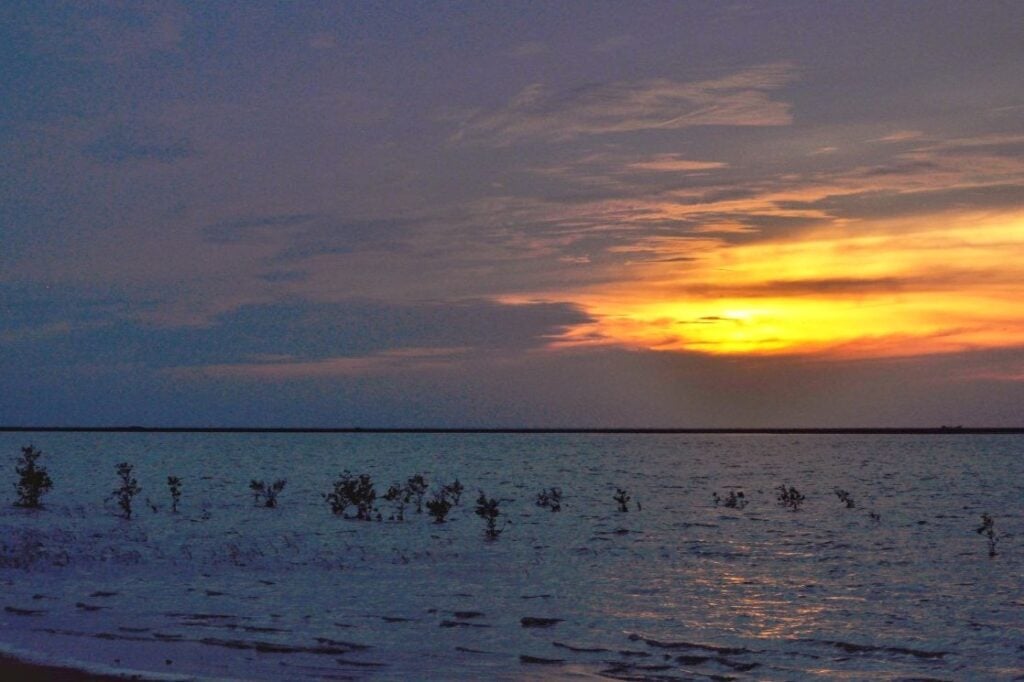
Myanmar provides a striking example of the impact of armed conflict on biodiversity.
Declared a Ramsar site in May 2020, Nanthar Island and the Mayyu Estuary are located on the rim of the Bay of Bengal – hosting shallow marine waters, rocky shores and mangrove forests, which serve as vital food resources for local communities.
According to the Ramsar website, the area is home to the critically endangered spoon-billed sandpiper and is the nesting grounds for the endangered green turtle, olive ridley sea turtle and leatherback turtle.
The International Union for Conservation of Nature (IUCN) notes that the wetland’s ecosystems not only support habitats for diverse flora and fauna, but also play an essential role in the well-being of surrounding communities.
They ensure a water supply, filter pollutants and sediments, act as natural barriers against storms and floods and sequester carbon dioxide in fighting against climate change.
Myanmar became a member of the Ramsar Convention on Wetlands in 2005, with seven Ramsar sites designated to date – covering a total area of 278,913 hectares, nearly four times the size of Singapore.
These sites include two in the central regions – Moeyungyi Wetland Wildlife Sanctuary in Bago region and Pyu Lake in the Mandalay region – and two in the north – Inlay Lake in Shan State and Indawgyi Wildlife Sanctuary in Kachin State.
The remaining sites are located in coastal areas, such as the Gulf of Mottama in Mon State, Meinmahla Kyun Wildlife Sanctuary in the Ayeyarwady Delta and Nanthar Island and Mayyu Estuary.
Most of these wetlands were added to the Ramsar Site list between 2016 and 2020, under Myanmar’s elected civilian governments, demonstrating that conservation efforts thrived when conflict subsided.
Myanmar’s Department of Forestry has identified another 99 wetlands as worth protecting, 85% of which are located in the Chindwin River and Ayeyarwady River basins.
Missing wildlife survey
Thiri Dae We Aung, Director of the non-governmental Biodiversity and Nature Conservation Association, noted that political instability had weakened efforts to maintain Ramsar sites, as the relevant organizations were unable to operate safely.
She added that many people fleeing the conflict into the forests have had no choice but to hunt birds for survival, further endangering species already at risk.
The war has also caused noise pollution that interferes with bird behavior, including finding breeding partners, building nests, and foraging – factors that will lead to a decline in wildlife populations.
These challenges add up to existing threats to wetland conservation, such as land-use changes, declining water quality, overfishing, invasive species and unsustainable tourism.
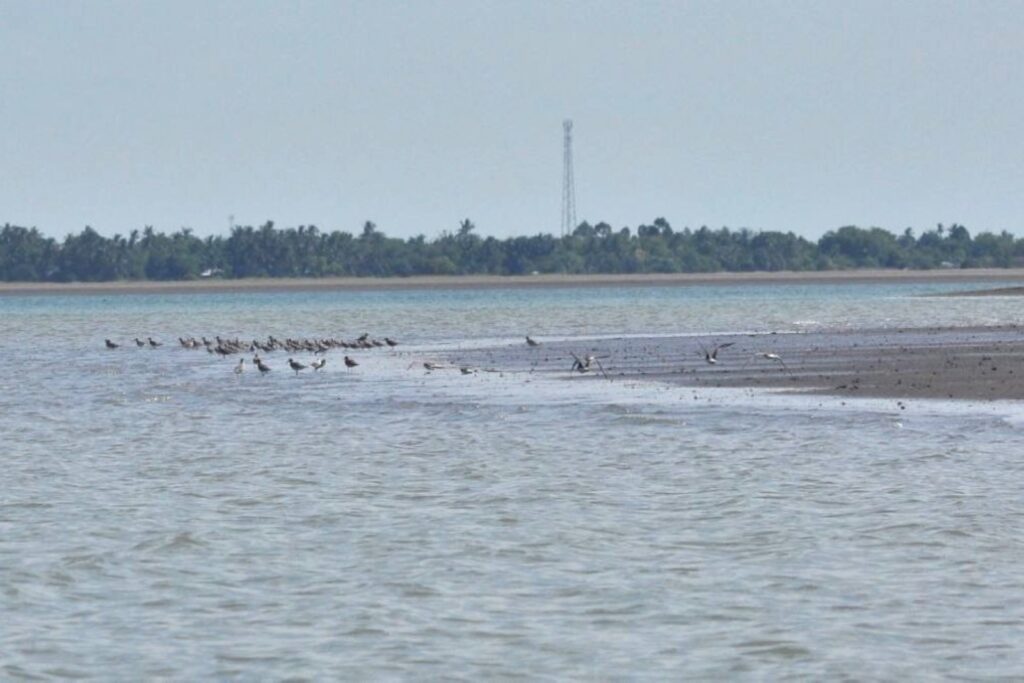
Since Nanthar Island and Mayyu Estuary were granted Ramsar site status, Rakhine State’s Forest Department has collected annual data on bird species to assess the impact of conservation and improve their approaches.
However, due to the ongoing conflict, officials were unable to compile data on bird migration at the mouth of the Mayyu Estuary in 2023. Historically, the site hosted about 100 bird species and more than 10,000 birds annually.
This year, the department recorded only 50 species and about 2,000 birds, noting a decline in the number of spoon-billed sandpipers, with 23 to 36 individuals visiting the site in the past.
Before the coup, Myanmar’s Ministry of Natural Resources and Environmental Conservation was in the process of drafting legislation to establish a National Wetland Committee, a governmental body aimed at strengthening wetland protection across the country while promoting its sustainable use. This process has since been suspended.
However, the Arakan Army announced in early 2022 that it was drafting environmental laws to protect the state’s natural resources, but no clear results have been produced so far.
Conservationist Yan Naung Soe is concerned that if wetland conservation is not executed in a timely manner, the damage could become irreversible.
He added that increasing extreme weather events are compounding the toll of Myanmar’s political conflict, as demonstrated by Cyclone Mocha, which struck the Rakhine coast in May last year.
The cyclone caused significant destruction, including mangrove forest loss and coastal erosion, which have diminished wildlife habitats.
“We estimate that 80% of the forest on Nanthar Island was damaged by the cyclone,” he said. “Increasing natural disasters will hinder our efforts to maintain the wetlands.”
This story was adapted from a radio script produced by Lay Waddy FM, a media outlet based in Myanmar’s Rakhine State. Mekong Eye added context and information for clarity.
This story was supported by the Internews’ Earth Journalism Network through Strengthening Transparency in Infrastructure Development Through Environmental Reporting in Southeast Asia


